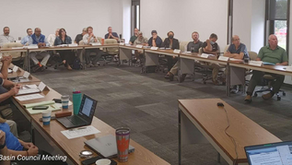How to Overcome the Fear of Using the Wrong Probability Distribution
- JD Solomon
- Oct 11, 2022
- 3 min read

Probability Distributions
The probability density function (PDF) is applied to continuous random variables, whereas the probability distribution function is defined for discrete random variables. For discussion purposes, these are often interchangeably called probability distributions and PDFs.

The probability density function (PDF) is used to specify the random variable's probability equaling a value in the sample space. In contrast, the cumulative distribution function (CDF) is the probability that the variable takes a value less than or equal to a value in the sample space. The PDF and the CDF are non-negative everywhere, and the integral over the entire space equals 1.
The finite differences are important but are also one reason why even savvy professionals shy away from probabilistic analysis. To keep it simple, we will refer to everything as a probability distribution in this discussion.
Sources of Fear
Statistical Illiteracy
My most memorable example is the licensed professional engineer with a master’s degree in chemical engineering. She wanted to hear all of the gory details of Monte Carlo simulations in a team setting. She freaked out when she learned, ‘this is the same statistics that they taught us in college.”
Most technical experts are statistically illiterate. Many of those who are statistically literate want to forget.
Deterministic Education and Training
I did a series of guest lectures at Auburn University and Duke University on probabilistic analysis and decision making. It reminded me that most engineering and scientists are only taught deterministic point estimates throughout their undergraduate and master curriculum. In the work environment, the world continues to love point estimates and single-point outputs.
Inadequate Post-Mortems
Most technical professionals do not want to be wrong, so the premise of not knowing what happens on the back end of their assumptions and predicted range of results is troublesome. Unfortunately, it is easier to just accept a model with single-point inputs and outputs being wrong. “All models are wrong, but some are useful” provides too much cover. And in turn, this leads to not enough inquiry.
Do Not Use the Tool Enough
Not using the tool enough is as much a reality as it is a trap. The way to turn this around is to perform Monte Carlo simulations on every excel model you produce. It takes more personal time (free time), but the reality and discomfort will persist until you take personal actions to overcome it.
Some Comforts (or maybe discomforts)
Few people, including senior management and your peers, are ever going to follow up because:
They don’t understand statistics and probability distributions
If inaccurate, people will not usually beat a dead horse (all models are wrong…damn!)
There is not enough money or work time to dive deep into your analysis
Most organizations are not going to spend the money to create a different model
You will probably be too conservative with your probability distribution anyway
The Central Limit Theorem governs most people
Anchoring around single-point estimates is more common than uncommon
Get In the Game
The world is richly skewed and highly uncertain. This includes biology, social sciences, human behavior to many physical phenomena (like floods, sand piles, and earthquakes). Physics in the laboratory is about the only thing in our lives that is normally distributed.
Three important things to remember will help overcome the fear of choosing the wrong probability distribution.
1. Most users do not have all the data they would prefer. Embrace it! Uncertainty is part of the power of probabilistic analysis.
2. A major outcome of first-generation models is to direct where more data is needed. Play with different probabilistic distributions to learn the sensitivities of the model. Use some common sense, but the end game of a first-generation model is not absolute correctness.
3. Avoid anchoring and central tendency. Remember that the past is more certain than the yet-seen future. Expand your ranges to emulate the uncertain future.
Get in the game! The fear of choosing the wrong probability distribution is an illusion in your head!
JD Solomon Inc provides program development, asset management, and facilitation services at the nexus of facilities, infrastructure, and the natural environment. Monte Carlo simulations are a standard tool in our approach to addressing risk and uncertainty. Contact us for more information on developing lifecycle forecasts, assessing the total cost of ownership, or providing third-party reviews of capital improvement programs or operating budgets.




Comentarios